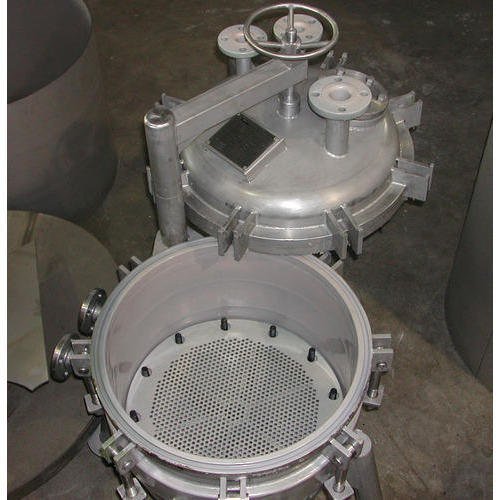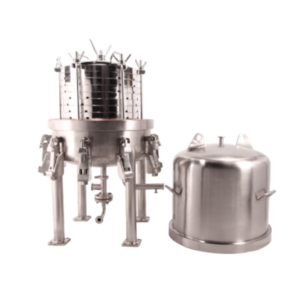Description
- Filtration Process:
- A slurry (a mixture of solid and liquid) is introduced into the Nutsche filter, which consists of a cylindrical vessel (usually made from stainless steel).
- The vessel contains a filter media (often a porous filter cloth or membrane) that separates the solids from the liquid.
- The liquid is filtered through the media, leaving the solids behind, which forms a cake on the filter surface.
- Vacuum or Pressure Assistance:
- Vacuum Filtration: In some Nutsche filters, a vacuum is applied beneath the filter medium to draw the liquid through the filter cloth. This helps to speed up the filtration process and allows for more efficient liquid separation.
- Pressure Filtration: In other designs, the system operates under pressure, forcing the liquid through the filter media. The pressure can be generated by a pump or a pressurized gas.
- Solid Cake Formation:
- The solid particles in the slurry accumulate on top of the filter media, creating a filter cake. This cake continues to grow as the filtration process continues.
- Cake Washing (Optional):
- In some applications, after filtration, the solid cake is washed to remove any residual soluble material. The washing liquid is passed through the cake, and the filtrate is drained out.
- Cake Discharge:
- After the filtration process is complete and the solid cake has been formed, the filter cake is removed, typically by mechanical means. This can involve scraping, scraping tools, or pneumatic pressure to help dislodge the cake from the filter surface.
- Filtrate Collection:
- The liquid that passes through the filter (filtrate) is collected in a separate container. Depending on the application, the filtrate may undergo further processing or be disposed of.





Reviews
There are no reviews yet.